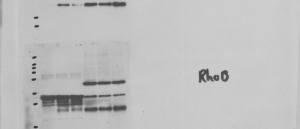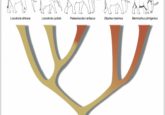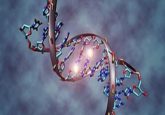South, north, east and west-ern: the story of how the western blot came into being

The western blot may appear to be just another staple lab technique. However, there are some stories surrounding its invention that are definitely worth knowing.
This might be news to some: scientists have a sense of humor (according to the origin story of the western blot, at least). Western blotting was named in a nod to a tradition that had been inadvertently started when Edwin Southern penned his new invention ‘the Southern blot’.
 For the latest information on western blotting, check out our In Focus: Western Blotting.
For the latest information on western blotting, check out our In Focus: Western Blotting.
Check out the resources today>>>
What is western blotting?
In 1975, Southern invented a new method that enabled analysis of DNA identity, size and abundance. It involved the use of electrophoresis to separate DNA fragments based on size, then the transfer to a membrane and hybridization with a radio-labeled DNA probe in order to detect a specific DNA sequence within a DNA sample. Southern named the technique after himself.
Then, in 1977, James Alwin, David Kemp and George Stark from Stanford University (CA, USA), invented a technique that was incredibly similar to the Southern blot. This technique also made use of a radio-labeled DNA probe, but was created in order to detect a specific RNA molecule within an RNA sample. The scientists named this method the ‘northern blot’.

A postdoc working in the lab of Robert Nowinski at Fred Hutchinson Cancer Research Center (WA, USA), W Neal Burnette (left), then attempted to identify specific antigens in a protein mixture, such as a cell extract. He had tried and failed to combine a radioimmunoassay with SDS-PAGE electrophoresis but could not visualize the interactions between antibodies and the separated proteins in the polyacrylamide gels.
Burnette took inspiration from the northern blot method and instead created a solid-phase replica of the gel. He realized that electrophoresis facilitated the blotting of proteins from the SDS-PAGE gels onto nitrocellulose paper, which seemed to work better than chemically modified paper. He utilized [125I]-labeled protein A as it could bind most types of antibody–antigen complexes and avoided the need to use a second radiolabeled antibody. The blocking of non-specific binding sites of the antibody and protein A to the nitrocellulose paper enabled clear radiographic images of antibody specific antigens to be obtained.
This technique was termed the ‘western blot’ (also known as the immunoblot). Not only was this in recognition to the Southern and northern blotting techniques, but also to the geographical location of the lab being on the west coast of the USA.
When Burnette submitted his methodology to Analytical Biochemistry in 1979, it was not very well received and his manuscript was rejected. This was largely due to their distaste for the naming convention. Regardless of this, the western blot technique still popularized thanks to the hearsay and support of fellow scientists.
 Want to keep up to date with the latest in the life sciences and western blotting?
Want to keep up to date with the latest in the life sciences and western blotting?
Become a member of BioTechniques today for free>>>
Building on a tradition
Since then, other blotting methods have also been invented, including those aptly labeled as the eastern and southwestern blots.
The eastern blot refers to the detection of post-translational protein modification, with the use of different substrates to detect glycosylation, lipoylation and phosphorylation. It was first described and popularized in 2009 by Thomas et al. There are also many other derivations of the technique, including middle-eastern blotting, far-eastern blotting and eastern-western blotting.
Far-eastern blotting, which was published in 1998 by Dai Ishikawa and Takao Taki, is a technique for the analysis of lipids separated by high-performance thin layer chromatography. As it was developed in the Tokyo Medical and Dental University (Japan), this name is no doubt also a reference to their geographical location.
The southwestern blot is so named as it encompasses elements of both the Southern and western blots. The technique involves the identification and characterization of DNA-binding proteins using DNA probes (Southern) and protein blotting (western) and was first described in 1980. This method was published before the western blot. Yet, it still alludes to it in its name, reaffirming the popularity of the western blot.
It is also correct that only Southern blot should be capitalized and not any of the other techniques, as Southern is a proper noun.
 Get more key resources on western blotting here
Get more key resources on western blotting here
The creator
The naming convention is not the only controversy surrounding the western blot. There are also different stories in regard to who should be credited with the invention of the blot.
In parallel to Burnette’s development, Harry Towbin and colleagues at the Friedrich Miescher Institute (Switzerland) developed a very similar technique that was also inspired by the northern blot. It, too, concerned the electrophoretic transfer of proteins from SDS-PAGE gels to a membrane. The team utilized antibodies for detection and were published in September 1979.
George Stark and colleagues at Stanford University (CA, USA) also developed a similar technique; theirs, however, involved the passive transfer of proteins. This was published in July 1979.
Burnette was aware of both Towbin’s and Stark’s efforts, however, believed his method to be simpler and more universal. Whilst Burnette saw that as a positive, the reviewers of his paper on its first submission picked it apart; labeling it as pedestrian. After rejection of his methodology, Burnette still distributed preprints around colleagues.
“The few preprints I had sent to colleagues seemed to have undergone logarithmic Xerox multiplication. I began receiving phone calls from researchers unable to read the umpteenth photocopied generation of the preprint,” wrote Burnette.
After some persuasion on Burnette’s part, his method was then published in Analytical Biochemistry in 1981. Burnette’s western blot has since been cited over 5000 times and researchers do refer to both Towbin and Burnette when they cite western blotting. So, perhaps they should both be credited with the invention of the western blot.
In 2005, Michael Eisenstein wrote:
“It is arguable…that Burnette’s most significant contribution to immunoblotting came when he christened the technique ‘western blotting’”.





